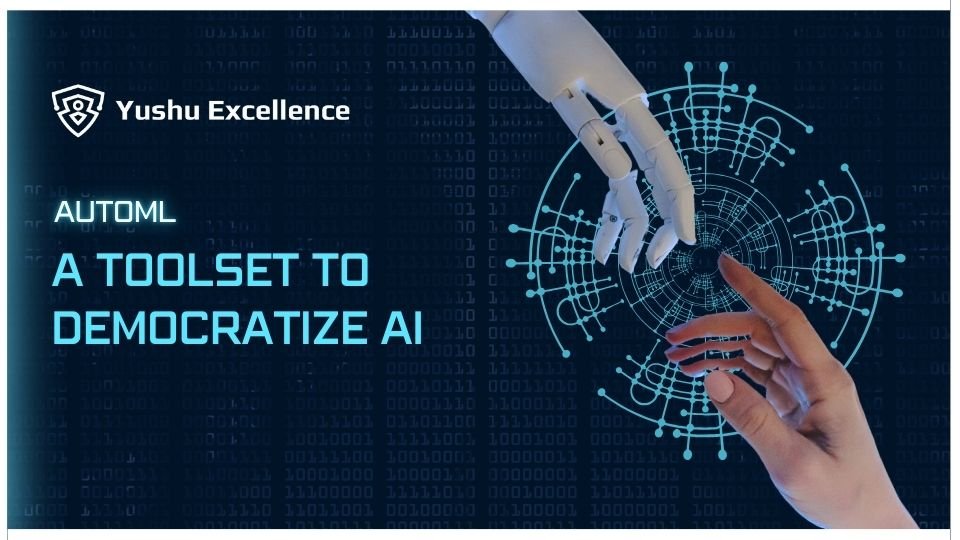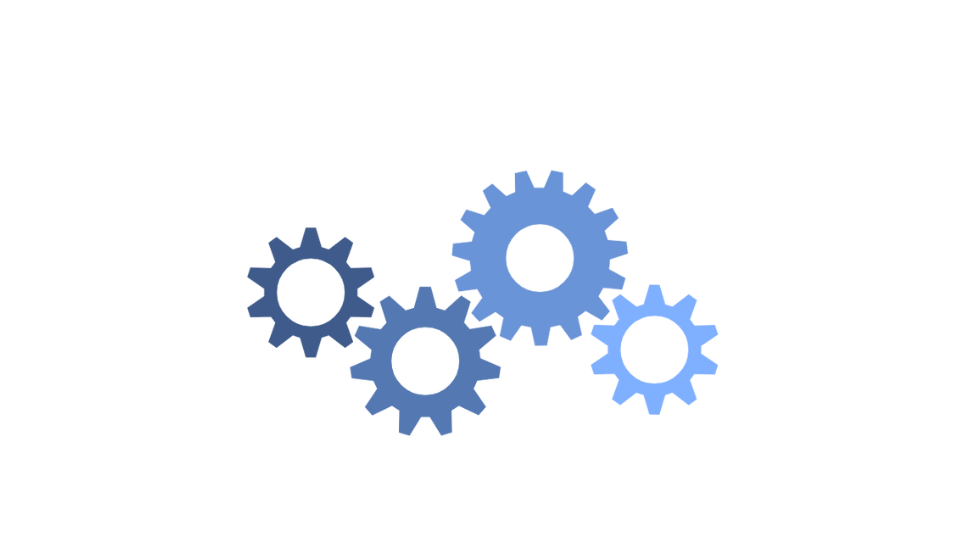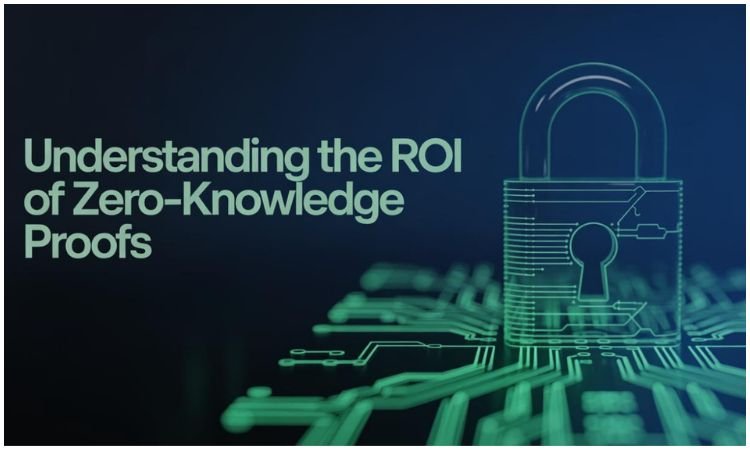
How does YouTube know what I want to see next? How does Instagram glues me for hours? Such personalized experiences are now common, thanks to advances in Artificial Intelligence (AI) and Machine Learning (ML). Can I use AI for my business? Using AI mean long development cycles, high costs, and slow returns on investment. The large corporations have unlimited resources. They can hire data scientists to perform complex series of steps. From gathering and cleaning data, choosing the right algorithms, tuning endless parameters, and finally deploying a working model. What about my small business? I have limited money and want the return on investment faster.
This is where Automated Machine Learning (AutoML) steps in. AutoML accelerates AI development, lowering costs and delivering faster, data-driven insights. By reducing the need for specialized experts and streamlining the entire process, it allows decision-makers to focus on the big picture—innovation, growth, and competitive advantage—rather than getting bogged down in technical details.
If you really want to apply such a system in your organization, next few paragraphs are worth the read. It is technical, but trust me it may be more rewarding than hiring an experienced data scientist.
How AI and ML models are built
Before exploring how AutoML simplifies these challenges, let’s review the traditional AI and ML model-building steps:

1. Data Collection and Cleaning:
Consider a grocery store predicting future milk sales. The data might include past sales, seasonal patterns, and promotional campaigns. Such information often arrives messy and scattered, with missing values or irrelevant entries. Cleaning and organizing this data is like tidying a cluttered room—time-consuming but essential. We require dealing with missing values, strange outliers, or incorrect entries.
2. Feature Engineering and Model Selection:
With clean data, the next step is selecting the right features and algorithms. Sometimes, a simple decision tree works well. Other times, more advanced methods like neural networks offer better accuracy but demand greater computational power. The best choice depends on the problem’s complexity, data volume, and your available resources.
3. Hyperparameter Tuning:
Models have internal parameters (hyperparameters) that need adjusting for peak performance. Finding the right combination is often a trial-and-error process, similar to perfecting a recipe. Neural networks, gradient boosted trees, and other complex models are especially sensitive to these adjustments.
Essential hyperparameters for decision trees are maximum depth, minimum samples split; neural networks need to fine tune the values of learning rate, the number of hidden layers, and the activation functions. Similarly, if we use a random forest algorithm we need to fine tune the value of estimators, maximum features, minimum samples leaf; and the Support Vector Machine (SVM) algorithm needs to decide the value of C, kernel, gamma parameters, etc.. They all are specific parameters and are truly important for performance tuning
4. Benchmarking and Deployment:
After refining the model, you must test it against benchmarks to confirm that it meets your standards. Only then can it be deployed into a real environment—such as a retail platform optimizing inventory or a healthcare system assisting doctors in making diagnoses.
These tasks can be intricate and resource-intensive. However, understanding them clarifies why AutoML is such a game-changer.
How AutoML works
AutoML platforms handle many of these steps automatically, thus ensuring that even users with limited technical expertise can build effective AI models. They clean data, select features, and transform variables, reducing the need for manual data wrangling. Consider a global e-commerce firm that once spent months fine-tuning forecasts. After adopting AutoML, they cut development time, quickly rolling out more accurate predictions and responding faster to market changes.
Hyperparameter tuning also becomes more efficient with AutoML. Instead of blindly guessing settings or relying on tedious grid searches, AutoML tools use intelligent optimization techniques—like Bayesian optimization or Population-Based Training—to pinpoint the best parameters swiftly. This saves time and often yields better outcomes.
When it comes to evaluation and deployment, AutoML simplifies the process. Using techniques like cross-validation, it estimates model accuracy and helps rank the best candidates. Some platforms align results with business metrics, ensuring that chosen models deliver real-world value. Integration with Machine Learning Operations (MLOps) frameworks further streamlines deployment and maintenance, allowing organizations to scale AI solutions confidently and cost-effectively.
Applying AutoML
AutoML’s biggest contribution is democratizing AI. Prominent platforms like Google AutoML (now Google Vertex AI), IBM Watson AutoAI, Microsoft Azure AutoML, and Amazon SageMaker Autopilot, etc remove technical barriers. They let companies focus on strategic goals—improving customer satisfaction, boosting efficiency, and innovating continuously—instead of wrestling with code. Let us see one of these tools in action.
Applying Vertex AI to a business like a grocery store looking to predict future milk sales demonstrates the power of Google’s advanced AutoML capabilities. I am using Google Vertex AI, you can use any of the AutoML tool. We start with raw sales data like daily quantities sold, seasonal trends, and promotional effects. Vertex AI takes this scattered data and transforms it into actionable insights with minimal effort. Begin by uploading your dataset to the Vertex AI platform. This step requires organizing your data into a tabular format, ensuring you have a date column for timestamps and a target column for milk sales. Once uploaded, Vertex AI automatically detects the structure of your data and prepares it for model training.
In a similar way, zero knowledge proof application can be used to ensure privacy and security in sharing sensitive business data, offering a higher level of trust in the predictions made by AI models.
Next, Vertex AI simplifies the modeling process by automating feature selection and hyperparameter tuning. For example, it intelligently chooses the right algorithms for time series forecasting, such as sequence-to-sequence models, while optimizing parameters like forecast horizon and historical context windows. With just a few configurations, such as specifying the number of days to predict and the historical range for analysis, your model begins training. Within a short time your grocery store gains a powerful predictive tool capable of estimating milk sales for the next month.
When the model is ready, Vertex AI’s batch prediction feature lets you input future dates and instantly generates sales forecasts. These predictions empower the grocery store to optimize inventory, plan promotions, and reduce waste. With Vertex AI’s ability to handle vast datasets and multiple variables, businesses like grocery stores can shift their focus from data wrangling to strategic growth, leveraging AI to stay ahead in a competitive mark
Democratizing AI
As these tools grow more sophisticated, AI will become as integral to our routines as smartphones or the internet. Barriers that once slowed AI adoption—complexity, cost, and a steep learning curve—are crumbling. AutoML encourages experimentation, allowing organizations to test ideas faster and refine them at lower risk.We stand on the threshold of a new era in which AI is not limited to large corporations or research labs. Consider starting small and I encourage the readers to try any AutoML platform and run a pilot project. It may be worth your time. As AI becomes a partner amplifying our ingenuity, the journey from raw data to meaningful insights promises to be smoother, more rewarding, and open to all.
Secure your Business with Yushu Excellence
Enhance your security with Zero-knowledge Proof Technology for optimized authentication. Contact us today to learn how we can safeguard your systems with cutting-edge solutions!
Connect Now







